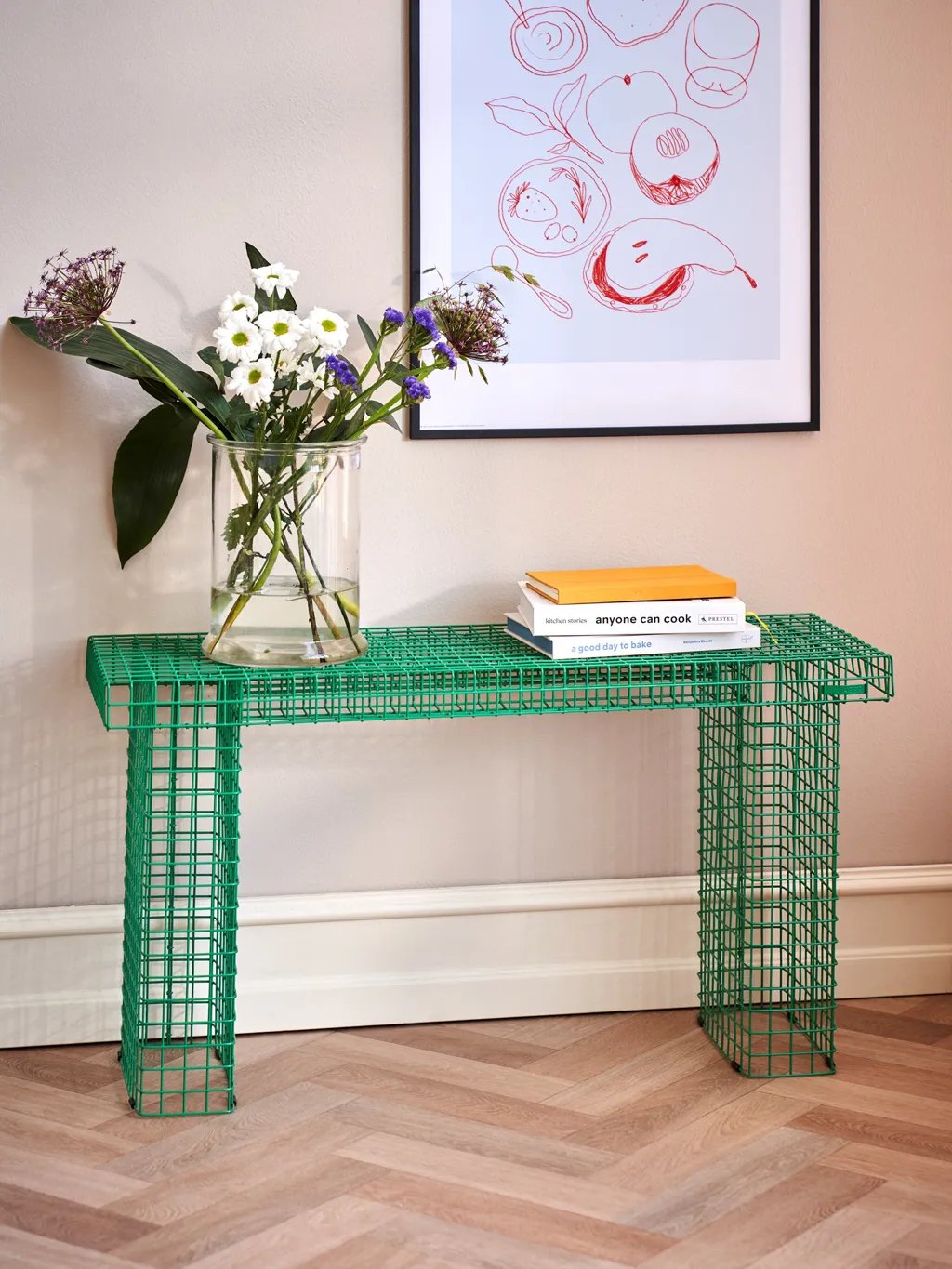Do you find yourself drawn to multiple styles of interior design, but aren't sure how to incorporate them all into your home? Perhaps you're living in a home with a character that doesn't suit your tastes or you share your space with someone whose style preferences are very different from your own. Don't worry; it is possible to mix different styles and create a cohesive and beautiful space. In this post, we'll explore some tips and tricks to help you create harmony in your home, even when working with disparate styles.
Dominance and Spice
Green wire bench from Sostrene grene
One key to successfully mixing styles is to let one style dominate while using another to add "spice" to the overall look. Instead of trying to create a perfect 50/50 split between styles, aim for an 80/20 split, where one style is clearly dominant while the other adds interest and variety. When it comes to large furniture items like sofas, beds, or dining tables, it's best to stick to an agreed-upon style to maintain consistency and avoid clashing. The "spice" elements can be incorporated through smaller details like artwork, lighting, or decorative accessories.
Style Triangles
If you prefer to work with three styles, consider using a style triangle. Two related styles serve as the base, while a contrasting style adds the "spice." For example, Scandinavian and Japanese minimalism could serve as the base, while a rustic element adds interest and variety. However, it's important to avoid using too many styles, as it can lead to a disjointed and cluttered look.
Color Harmony
Introducing a common color theme is an excellent way to create harmony between disparate styles. Using similar color palettes throughout the space will help connect different parts of the room and create a cohesive look. However, be mindful of using too many colors, as it can become overwhelming.
Avoid Clusters
One common mistake when mixing styles is to cluster all of the "spicy" elements together in one area, which can create a jarring effect. Instead, try to spread these elements throughout the room to create balance and harmony.
Same Mood, Different Styles
Image from Bobby Berk
While it's not necessary for all the details in your home to match, they should contribute to the same overall mood. For example, if you're looking to create a relaxed and casual vibe, avoid using overly formal furniture styles that clash with the mood you're trying to achieve.
In conclusion, mixing different styles can be a fun and creative way to personalize your living space. By following these tips and tricks, you can create a harmonious and cohesive look, even when working with seemingly disparate styles. Remember to let one style dominate while incorporating "spice" through smaller details, consider using a style triangle, use color harmony, avoid clustering, and aim for a consistent mood throughout your space. With a little bit of creativity and some thoughtful planning, you can create a beautiful and unique home that truly reflects your personal style


